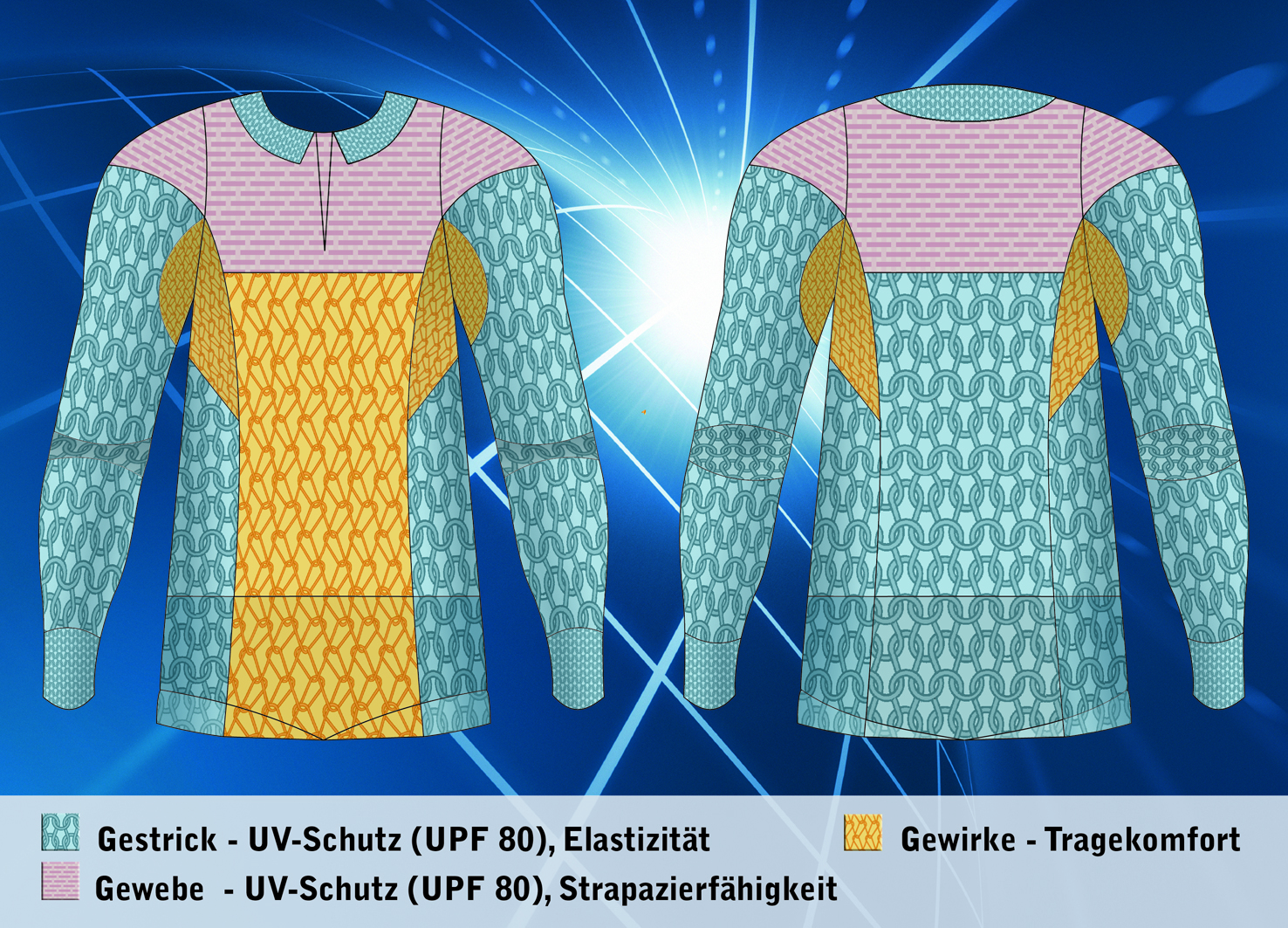
Hohenstein releases quality labels for workwear
Sunscreen was yesterday's solution, today its UV protection clothing – according to researchers at Germany’s Hohenstein Institute, doctors believe that the right clothing gives better protection from the dangers of the sun than creams. Nevertheless, the researchers say, many people who spend a long time outdoors because of their work, such as builders, gardeners, farmers, law enforcement officers, industrial cleaners or waiters, are reluctant to use specia
30th September 2010
Innovation in Textiles
|
Bönnigheim
Sunscreen was yesterday's solution, today its UV protection clothing – according to researchers at Germany’s Hohenstein Institute, doctors believe that the right clothing gives better protection from the dangers of the sun than creams.
Nevertheless, the researchers say, many people who spend a long time outdoors because of their work, such as builders, gardeners, farmers, law enforcement officers, industrial cleaners or waiters, are reluctant to use special UV protection clothing.
"Working clothing that provides UV protection has to be able to be washed lots of times - and that's why until now it was always made of thick fabrics that soon made you feel uncomfortable if you had to exert yourself physically", says Dr. Boris Bauer. As a project leader at the Hohenstein Institute in Bönnigheim, he is currently trying to develop working clothes which provide adequate UV protection for a full (working) day and at the same time are optimised physiologically. That is to say, they should be really breathable and feel like light casual clothes.
"It is a widely held misconception that any clothing provides adequate sun protection", says Dr. Bauer: "Depending on the type and density of the fibre, the surface finish, the structure and colour of the textile, the UV protection factor can be very different. Our aim is to develop working clothes which, visually and functionally, are more like normal working or leisure clothes, but have additional functionality such as good UV protection and are comfortable to wear. Only when all these aspects come together will more people begin to include this type of clothing in their working wardrobe and so protect themselves from the negative effects of UV radiation."
Knit fabric with UV protection factor (UPF) of 80
Hohenstein researchers have already gone a long way towards achieving this aim with their first functional samples: their long-sleeved shirts have a UV protection factor (UPF) of 80 in particularly exposed areas like the shoulders. The fabric that is used there not only offers high UV protection but is also extremely hard-wearing. The knitted fabric used for the back and sleeves is stretchy, making the shirt easy to pull on and off, and at the same time it also has a UV protection factor (UPF) of 80.
Because of their cut and the textiles that are used, these functional samples are also said to be very comfortable to wear. For example, there are special textile zones under the armpits and around the stomach where the thermo-physiological and skin sensory characteristics have been optimised in view of the increased sweat production there.
 Dr. Bauer says that making the improved working clothing easy to look after poses a particular challenge: "When we are choosing the combination of materials and treating them, we have to make sure that they can be washed not only in a domestic washing machine but also under the mechanical and thermal stresses of commercial laundries. We are currently working intensively on this issue with our functional samples."
Dr. Bauer says that making the improved working clothing easy to look after poses a particular challenge: "When we are choosing the combination of materials and treating them, we have to make sure that they can be washed not only in a domestic washing machine but also under the mechanical and thermal stresses of commercial laundries. We are currently working intensively on this issue with our functional samples."
UV protection factor UPF (Ultraviolet Protection Factor) and UV Standard 801
Dr, Bauer explains how UV protection works in textiles:
“The UV protection factor (UPF) indicates how much longer the user of sun protection textiles or the wearer of UV protection clothing can stay in the sun without damaging their skin.
The UPF is the same as the sun or light protection factor on sun creams (SPF or LSF). For both, the basis for the calculation is what is called the natural protection time of the skin, but this varies greatly depending on your individual skin type.
The skin of a person with skin type 1, for example, with red or blond hair, blue eyes anda very pale complexion, has a natural protection time of about five to ten minutes. If such a person is exposed to strong sunlight for any longer without protection, they risk dangerous sunburn.
If they are protected by a textile material with UPF 60, they can extend the length of time they can remain in the sun by sixty times, without causing any skin damage, that is to say, for a maximum of 5 to 10 hours (60 X 5 min = 300 min to 60 X 10 min = 600 min).”
The Hohenstein researchers calculate the UPF using the particularly stringent UV Standard 801. This measuring method is based on real-life wearing conditions, so the UV protection factor of a textile is also calculated when it has been artificially aged, stretched and moistened. Working on a worst-case principle, only the lowest value that is measured counts.
The aim of the Hohenstein scientists is to raise the level of acceptance of UV protection clothing by making it more comfortable to wear. The functional samples produced by the Hohenstein Institute combine various different materials to achieve the best possible functionality: UVprotection and tough fabric on the shoulders, UV protection and stretchy fabric round the back and sleeves and breathable fabric for the armpits and stomach area.
“We are grateful to the Research Association of the Textile Research Council for its financial support for IGF project no. 15142 N/1, which was provided using funds from the Federal Ministry of Economics and Technology (BMWi) via the Federation of Industrial Research Associations AIF as part of the programme to support "Industrial Community Research and Development" (IGF). We are also grateful to our project partner, whose specialist expertise has made a major contribution to the successful completion of the research project. We must also thank all members of the project support committee who, with their specialist expertise and willingness to contribute to the discussions, helped ensure a successful conclusion to the project,” the Hohenstein Institute says.

Business intelligence for the fibre, textiles and apparel industries: technologies, innovations, markets, investments, trade policy, sourcing, strategy...
Find out more